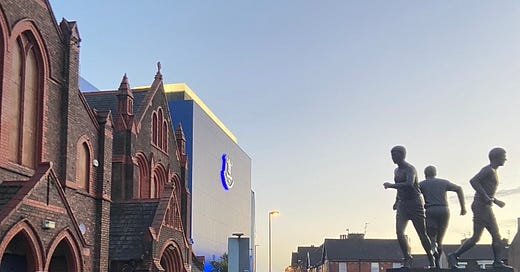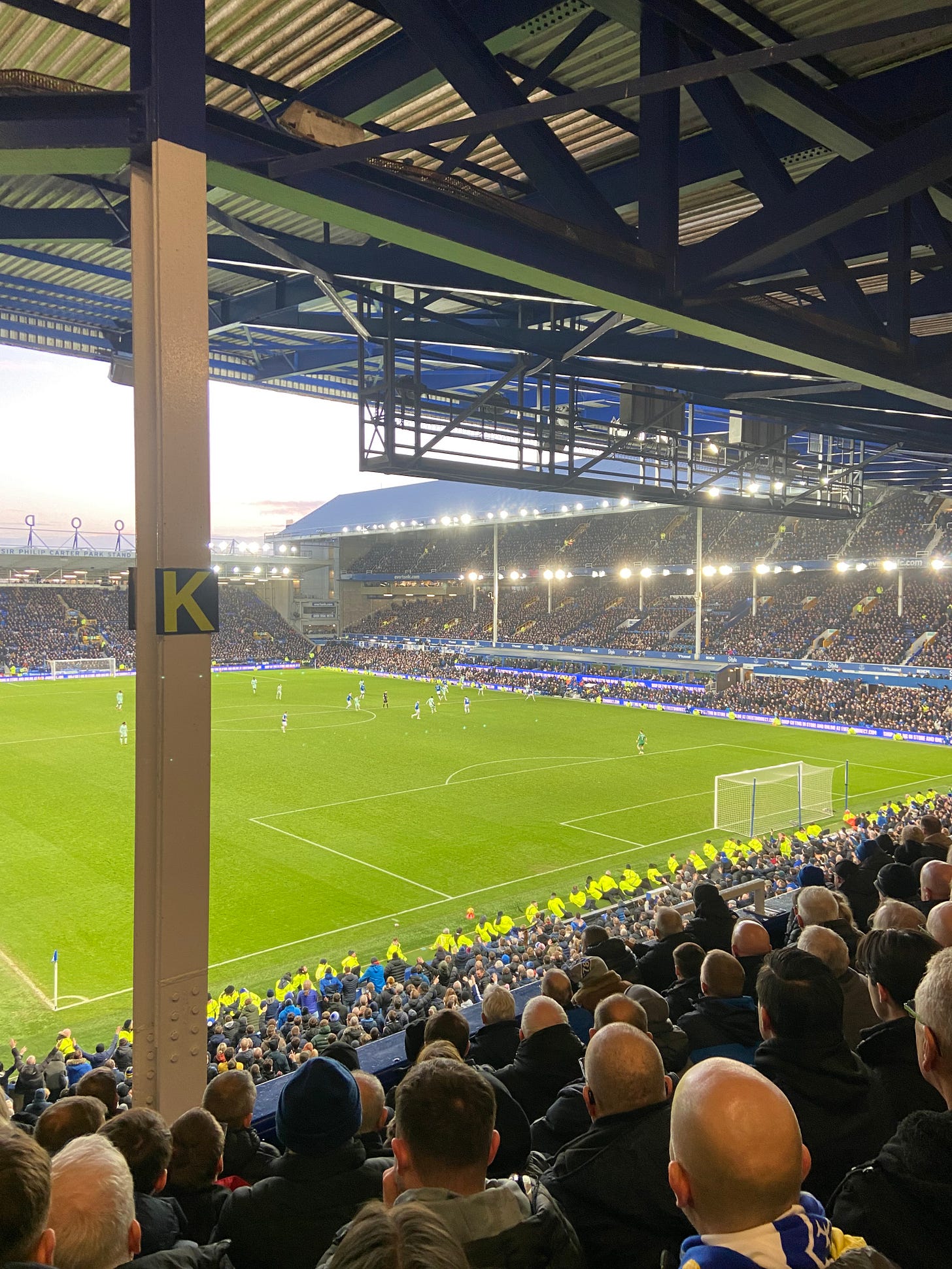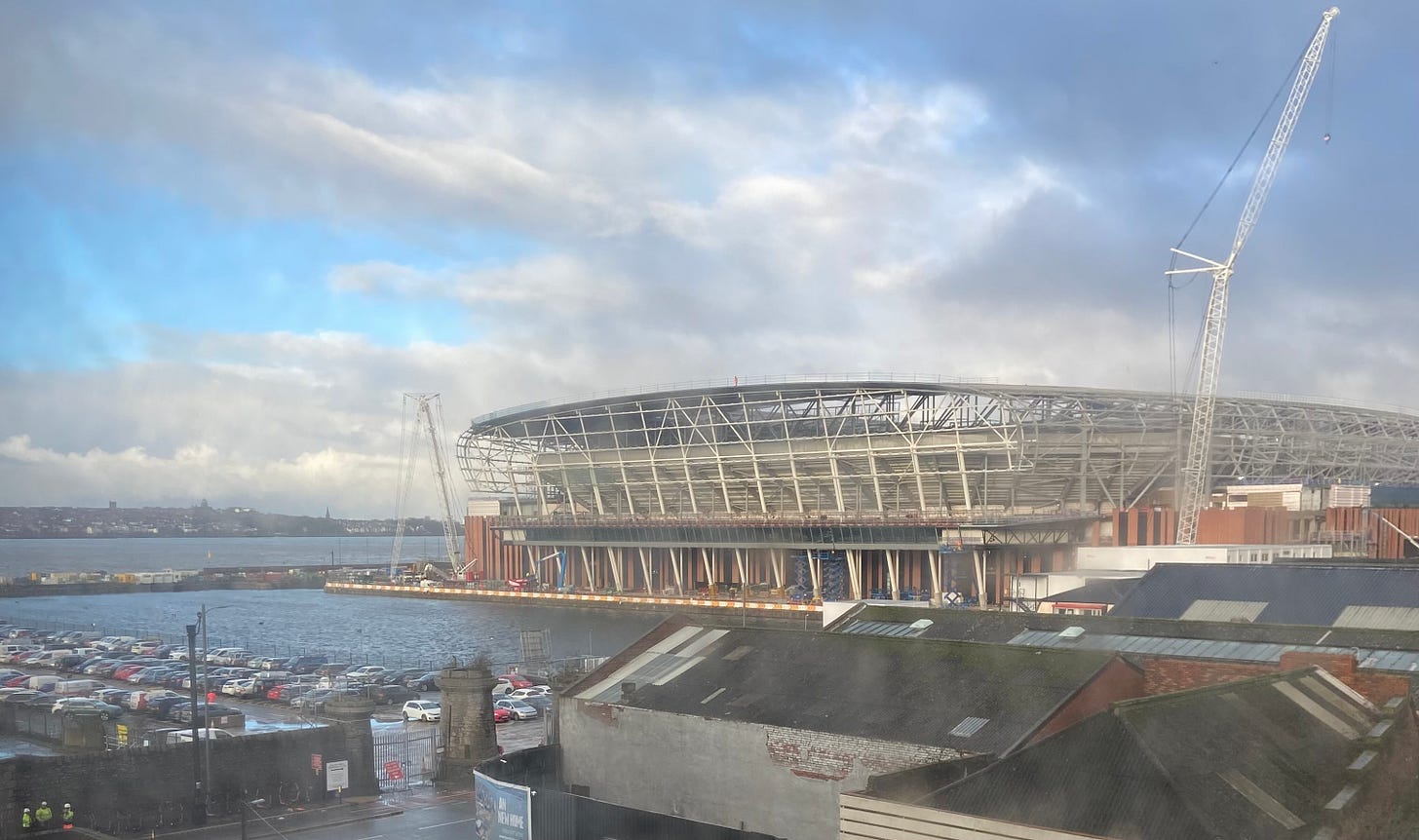Everton Football Club are unique in the city of Liverpool. They are the only club that builds new football stadiums.
Their third such project, after Anfield and Goodison Park, is rising majestically out of the previous wasteland on the Banks of the Royal Blue Mersey at Bramley-Moore Dock.
When Everton last moved stadium, way back in 1892 after a dispute with the owner of the land at Anfield Road, they skipped a short distance across Stanley Park, and one of the most intense rivalries in world football was born, as the aforementioned Anfield landlord founded Liverpool FC.
This happened over 130 years ago, so the records are scant as to how seamless — or not — that move from Anfield to Goodison Park was, but what we do know is that Everton played their first home game of the 1892-93 season at their new home, having played their last home game of the previous season at Anfield.
Incidentally, that final game at Anfield was a 5-2 defeat to Bolton, who finished above fifth-placed Everton. The Blues did better at Goodison, despite only drawing that first game 2-2 with Nottingham Forest, finishing that season in third place.
The £760million stadium at Bramley Moore — The Everton Stadium — will be completed by contractor Laing O'Rourke in December of 2024, and with a good winter, it is possible it could be sooner. In the immortal words of Mick Jones of The Clash “Should I stay, or should I go.”
That has become a tasking question for Everton’s Board of Directors; specifically, do they move as soon as the magnificent new stadium is ready, or aim for the start of season 2025-26?
On December 15th, 2023, Everton announced their decision, with Interim Chief Executive Colin Chong stating: “It is a Club decision driven by a combination of commercial insight, a comprehensive review of the logistics required, an analysis of the potential impact upon our football operations and, importantly, fan feedback sourced as part of our recent stadium migration survey.”
Chong also said he had recently had the pleasure of meeting with Everton’s Fan Advisory Board (FAB), with More Than A Game understanding that the club notified the FAB of their decision in November.
Furthermore, at that meeting, the FAB also received “An overview of the initial findings of the stadium migration survey that was issued to fans in October”. This will be shared with the wider fanbase in early 2024.
“We understand Everton’s position on this, we are pleased that they took the views of fans into consideration and look forward to a season-long celebration of the Grand Old Lady that is Goodison Park before we move to our new stadium at Bramley-Moore Dock.”
Dave Kelly, Chair of the FAB
The timing of the announcement was surprising to some, but with Everton traditionally announcing ticket prices for the following season in January, it also makes sense and brings clarity to season ticket holders around ticket pricing and, specifically, it avoids having a campaign that could have seen prices being one price at Goodison Park and another, higher price at The Everton Stadium.
Barry Williams, Chair of the Everton Fans’ Forum, told More Than A Game that he agrees with delaying the move until the start of the 2025-26 season because “It’s difficult to move mid-season”, and although he understands people wanting to move mid-season, his personal preference is an end-of-season move.
Everton fans are among the most opinionated and engaged in English football, and so it was never likely that all fans would agree on the timing of the move. Everton have been praised by fans for making the decision, although with an Interim Board in place during the ongoing proposed sale of the club to 777 Partners, it remains to be seen whether the views of a potential new owner — or owners — may differ.
Meanwhile, there is the monetary impact. It is hardly a secret that Everton face stark financial challenges — ones that just last month led to them being deducted 10 points by the Premier League’s Independent Commission.
Chong did not go into detail about financial matters, and rumours continue to circulate in the legacy media about Everton’s position. While some have suggested the financial difference between staying at Goodison and moving as soon as possible is marginal, the reality is not known. However, with a much higher capacity and higher ticket prices at The Everton Stadium, there remains a fear that the club would not be maximising their facilities by choosing to delay the move.
Those simple drivers and others such as the largest fan zone in English football suggest that Everton could be passing on up to £20m of revenue by staying at Goodison for the second half of next season.
Julie Hobson is Chair of Everton’s Shareholders’ Association. She told More Than A Game that “as a fan, it’s great that we have another season at Goodison Park and get to say goodbye properly.” However, she added: “ … From a commercial standpoint I feel it’s a massive opportunity missed by the club to generate new revenue as soon as possible and eradicate two sets of costs.”
On balance, Hobson thinks the club should be moving at the earliest opportunity.
Frank McKenna, who is the Chair of leading business networking organisation Downtown In Business, is not surprised Everton have concluded that a midseason move is not on their agenda; he believes that the sporting reasons alone justify staying until the end of the 2024-25 season. He notes that players do not like change, and he would be surprised if the Director of Football or the manager would want a mid-season switch either.
“In terms of the finance, I’d suggest a significant amount of the projected loss can be offset with high profile friendlies — possibly a pre-season mini tournament, which will attract huge interest”, he adds. McKenna also believes concerts in the summer of 2025, which could also double-up as test events, could help mitigate the perceived loss of revenue.
“I Wouldn’t want to be leaving the Old Lady on a wet and windy Wednesday night against Wolves. Let’s give Goodison Park the sendoff she deserves.”
Frank McKenna
The Clash’s hit contains another poignant lyric: “So if you want me off your back, well, come and let me know…”
With that in mind, the current Everton Board seem to have produced a pragmatic decision based upon a range of factors, not all of which are obvious to enthusiastic fans. For that reason alone, the club should be applauded — especially if, as it seems — their decision has not been dominated by money but rather gives a nod to the emotional attachment that Evertonians have to their long-term home.
Goodison Park is renowned across football for its legendary atmosphere, an ‘old-school’ stadium that is frequently referenced by opposing players and managers as being the most intimidating in the league. Taking that atmosphere from Goodison Park to The Everton Stadium was a challenge presented to architect Dan Meis, who has produced a design that — with 25 percent more capacity — promises to deliver an environment and atmosphere akin to Goodison.
At the forefront of making sure that happens are fan group The 1878’s; regular fans who have done extraordinary things over the past two to three years, to bring memorable atmospheres to Goodison, the surrounding area and even Everton’s training facility at Finch Farm. No more potent example of the power of home advantage can be found in recent years than Everton’s relegation escapes of 2022 and 2023.
Katie Carter of The 1878’s told More Than A Game: “In the end, it is crucial to remember that fan emotions and connections to the club are unique and personal.
“The club should strive to honour both perspectives and ensure that the transition to the new stadium is done in a way that respects the memories and significance of Goodison, while embracing the opportunities that the new stadium brings. As a group, we will continue to listen to the fans’ ideas, that are always welcome. We want to ensure we give Goodison the sendoff it deserves and continue the atmosphere into the new ground.”
Everton decided to stick, not twist. Hopefully, it is a decision they will look back on with pride, and not regret.
By JohnB
John is a board-level veteran at FTSE-100 companies, specialising in business improvement and organisational change across the Media, Financial Services, Manufacturing and Energy & Utility sectors. John offers an expert perspective on the business behind the game.
(Follow: @John_B58)






